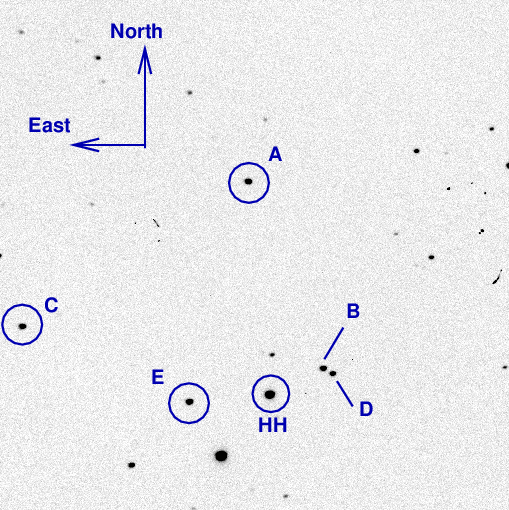
On the night of Mar 11/12, 2016, we opened the new calendar year at the RIT Observatory by observing two targets:
We started with the eclipsing binary star HH UMa, which Kaitlin is studying for her capstone project. We observed it last summer several times from RIT:
We also acquired data at Kitt Peak during January, 2016.
This time, we hoped to fill in a gap in the B-band light curve.
The main setup was:
Notes from the night
Here's a chart of the field of HH UMa, which is at
RA = 11:04:48.1 Dec = +35:36:27 (J2000)
The chart is about 12x12 arcminutes.

Among the labelled stars is
A UCAC4 629-045393 V = 12.721
Below is a graph showing the sky brightness as a function of time during the observing run. The smooth curve indicates lack of clouds, and the brief dip occurred when we closed the dome slit briefly to unhook the bottom panel.
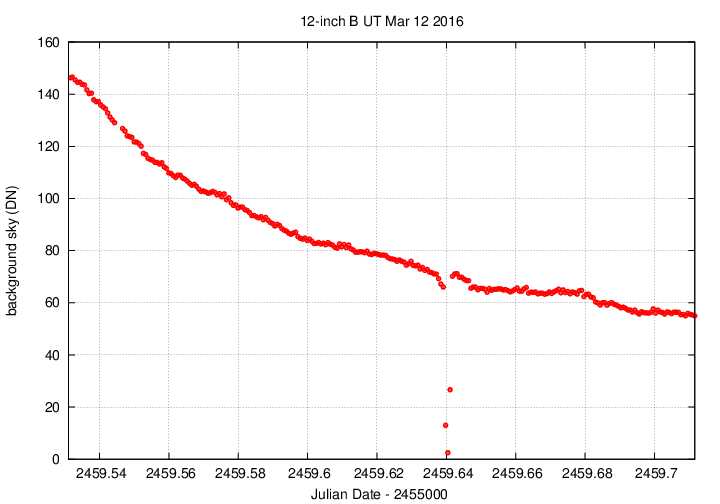
Below is a graph showing the FWHM as a function of time during the observing run. We didn't refocus during this half-night.
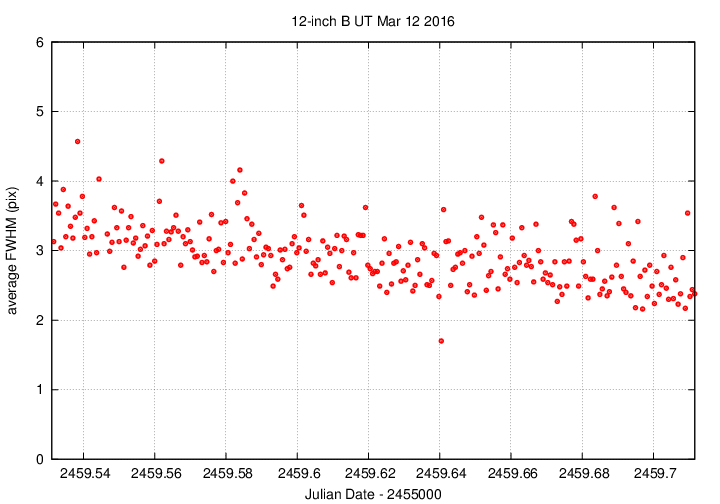
There were no good guide stars, so quite a few images had trailing. Using aperture photometry with a big radius of 7 pixels (radius of 10.0 arcsec), I measured the instrumental magnitudes of a number of reference stars and the target. Following the procedures outlined by Kent Honeycutt's article on inhomogeneous ensemble photometry, I used all stars available in each image to define a reference frame, and measured each star against this frame.
Sigma-vs-mag plot: HH UMa is the second-brightest star, and clearly varies.
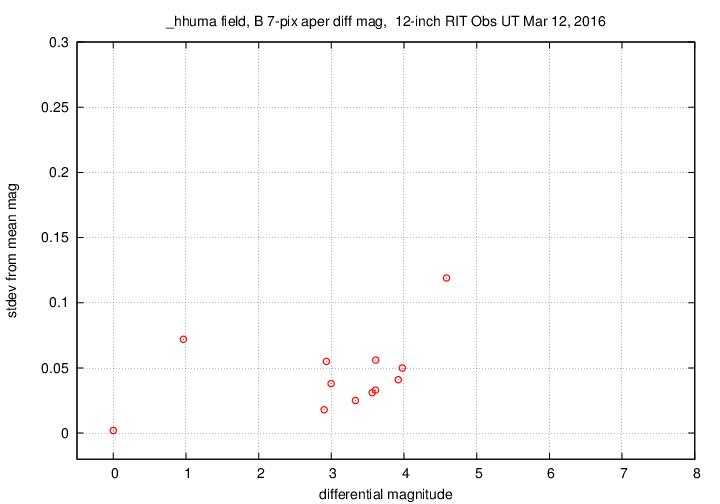
Image adjustment factor shows evidence for just a bit of clouds, and a few outliers due to trailing.
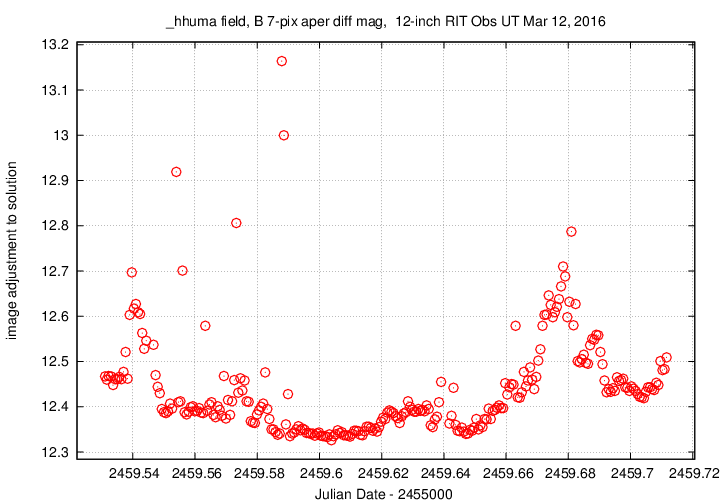
The target, shown in green, goes up to a maximum and back down to a minimum during our run; we covered about one half of a cycle.
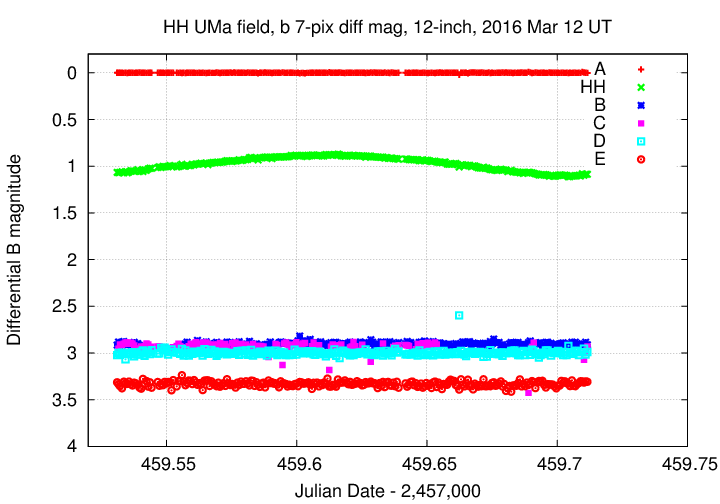
I heard that this AM CVn system was discovered in outburst via E-mail from folks at the Center for Backyard Astrophysics , and decided to check it out. Now, this is a faint system, even when it's at its brightest: only about V = 15.7. That was a signal that I'd have trouble getting any good measurements with my small instrument.
Below is a chart of the target, taken from the POSS II. The target is -- at its name suggests -- located at
RA = 19:18:41.98 Dec = +44:49:14.5 (J2000)
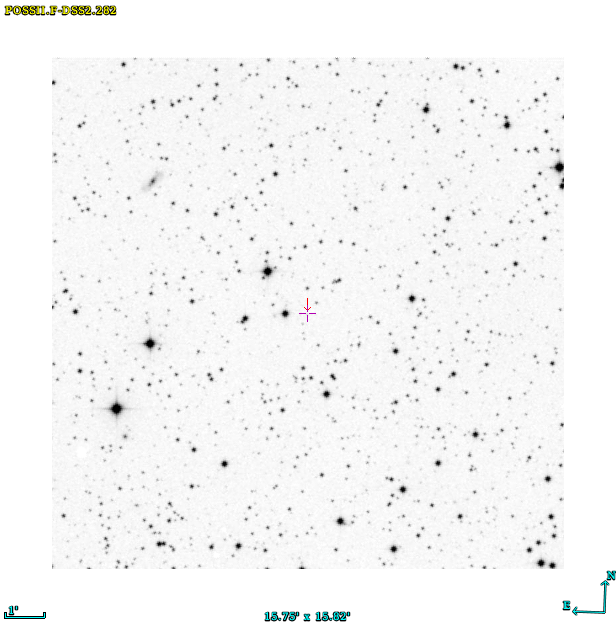
I was able to star-hop to this field easily, even in the crowded region of Cygnus in which it lies. The telescope did a nice job of finding a guide star and using it to hold the field steady for the entire 3-hour observing run.
The main setup was:
The conditions were good: look at the sky value over that time. I started imaging the field while it was low in the NorthEast, only 30 degrees above the horizon, but that altitude doubled by the time the coming dawn forced me to quit.

In order to detect the target, I co-added each set of 3 consecutive 45-second exposures, then ran the photometry procedures. I performed aperture photometry with a radius of 5 pixels = 7.1 arcsec, then sent the results through the regular ensemble analysis.
The sigma-vs-mag plot has the usual form. The two outliers at about mag 4.5 aren't real variables (one is caused by a hot pixel, the other by blending with a nearby, brighter star). The target CV is at mag 6.1, where the typical scatter is about 0.10 mag.
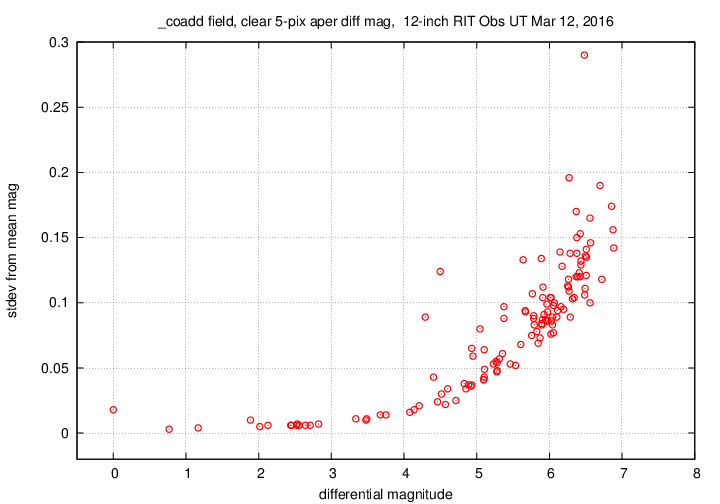
I tried making a light curve, but I don't trust the sort of rolling variations it shows. Note that the star "E" of similar faintness also shows similar wobbles. The period of the CV is said to be 31 minutes, or about 0.022 days.
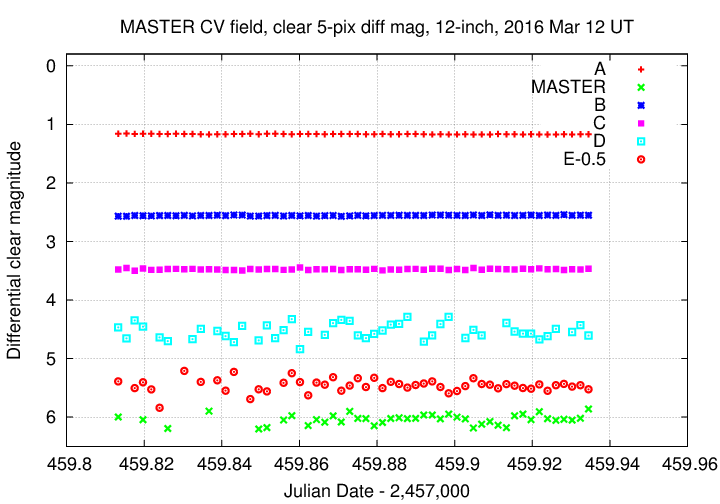
Rats. No result.
Last modified 3/12/2016 by MWR.